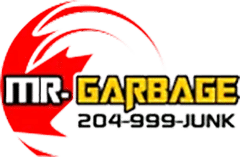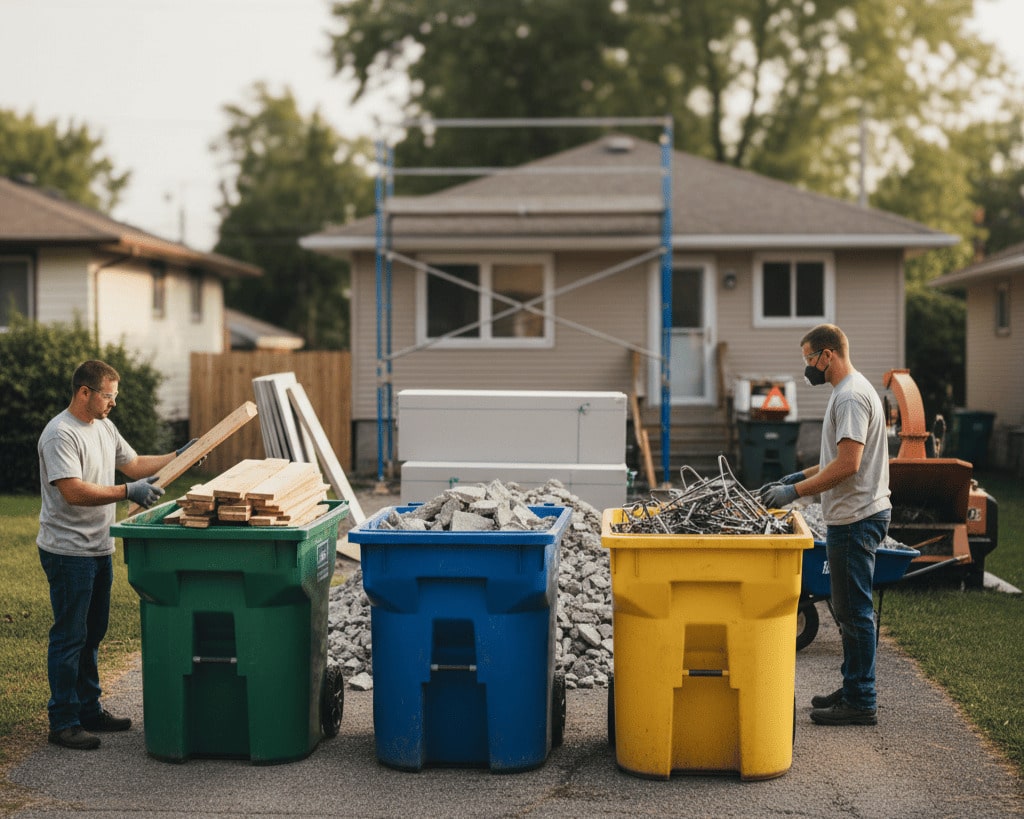How Curbside Recycling Services Work in Winnipeg
- Keep recyclables clean and dry. Empty containers of food residue and give them a quick rinse when needed.
- Flatten the cardboard and nest the paper to save space.
- Use the city’s Recyclepedia or collection-day lookup if you are unsure about a specific item.
A quick checklist of what goes in your curbside recycle bins:
Common items accepted by curbside recycling services
- Paper and cardboard (flattened)
- Rigid plastics labeled with acceptable symbols (check local guidance)
- Glass bottles and jars (rinse and remove lids when required)
- Metal cans and foil
- Mixed paper items, such as mail and magazines
Items that cause contamination
- Plastic bags and film (these can jam sorting equipment)
- Soiled food containers and greasy pizza boxes (place in organics or garbage depending on local rules)
- Loose textiles or clothing (many programs do not accept these curbside)
- Electronics and batteries (these need special drop-off points)
How is curbside recycling sorted after pickup?
- Arrival and tipping: Trucks tip the load into a receiving pit.
- Primary separation: Large contaminants and bulky items are removed first.
- Optical and mechanical sorting: Machines separate materials by type using sensors and air currents.
- Manual quality control: Workers spot-check and remove problem items.
- Baling and shipping: Sorted streams are baled and sent to end markets to be remade into new products.
Why proper sorting and rinsing matter
Contaminated loads reduce the value of recycled material and increase the chance that entire batches will be rejected by buyers. A little preparation at home, rinsing, flattening, and keeping materials dry, helps keep Winnipeg’s recycling stream clean and useful.
When did curbside recycling start, and how does Winnipeg fit into the history
- 1970s: Rising environmental awareness lays the groundwork for modern programs.
- Early 1980s: municipal blue box programs appear across Canada.
- Today, Winnipeg operates curbside carts and an integrated waste network, including depots and processing facilities. regionofwaterloo.ca
Can you recycle clothes curbside?
- Use clothing donation drop-off locations or textile recycling programs.
- For large household cleanouts, use a specialized pickup or a junk removal service that sorts textiles for reuse or textile recycling. Mr. Garbage offers pickup and sorting that can route reusable clothing to donation centres or recycling facilities.
Common homeowner questions answered.
What happens if my recycling is missed?
How should glass be prepared for curbside glass recycling?
What can be recycled curbside that surprises homeowners?
Local examples and real-world tips from Winnipeg homeowners
- A simple rinse routine: rinsing jars and cans right after use avoids build-up and odors.
- A staging area for large collections: keep a laundry basket or large box for recyclables that need cleaning; when full, bring them to the curb on pickup day.
“Winnipeg residents win with a small routine: rinse, flatten, and separate problem items,” says Rachel Morris, a local recycling consultant. “When households prepare materials properly, the local sorting system can do its job and fewer resources are wasted on contamination.” (quote provided for guidance)
How private services like Mr. Garbage complement curbside recycling services
- Extra pickup for cleanouts, bulk items, and awkward recyclables.
- Sorting and diversion: providers sort items into reuse, recycling, donation, and disposal streams.
- Guidance on problem plastics and where to bring specialized waste.
How Winnipeg’s recycling performance fits into the Canadian picture
- Higher diversion means fewer local environmental impacts and better resource recovery.
- Proper sorting at the household level helps Manitoba meet regional and national diversion goals.
How is curbside recycling sorted? A deeper look for the curious
- Trommels and screens remove small and large items.
- Air classifiers separate light materials from heavy ones.
- Optical sorters and near-infrared sensors identify plastics and papers.
- Robotic sorters and manual pick lines perform final quality control.
Winnipeg’s MRF uses a high degree of automation to speed processing while keeping quality high. GFL Environmental Inc.
Quick homeowner checklist before leaving recyclables at the curb
- Rinse and dry containers where possible.
- Flatten the cardboard and keep the paper dry.
- No plastic bags in the blue bin. Bagged recyclables often end up as contamination.
- Keep electronics, batteries, and hazardous waste off the curb; find the proper drop-off or a private pickup.
- For bulk cleanups, consider a scheduled pickup by a responsible local provider. Mr. Garbage offers curbside-style collections for items your blue bin won’t accept.
Conclusion
Frequently Asked Questions (FAQs)
Q: What is considered curbside recycling services?
A: Curbside recycling services pick up approved recyclable materials from a residential curb, cart, or bin on a scheduled day and deliver them to a sorting facility.
Q: Can I put clothes in curbside recycling?
A: Usually not. Textiles often need special drop-off or donation. Use textile recycling or schedule a pickup with a service that sorts donations.
Q: How should I prepare glass for curbside glass recycling?
A: Rinse bottles and jars, remove lids if the city asks, and place them loose in the bin rather than in plastic bags.
Q: What happens to my recyclables after curbside pickup?
A: They go to a Material Recovery Facility for sorting, then to processors and end markets to be remade into new products.
Q: Who do I call if I have bulk items or extra recycling?
A: For overflow or bulky items, contact local private services such as Mr. Garbage for pickup and responsible diversion.

